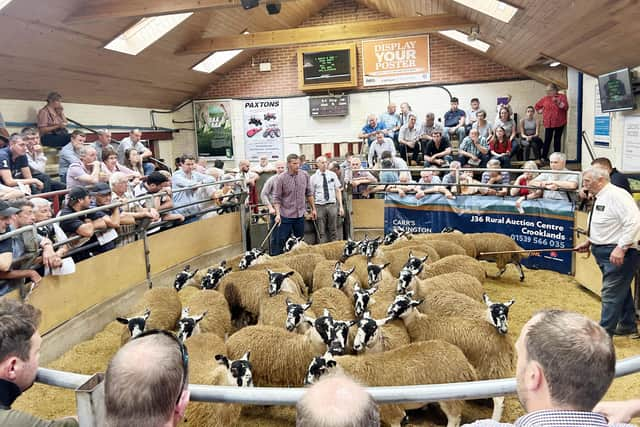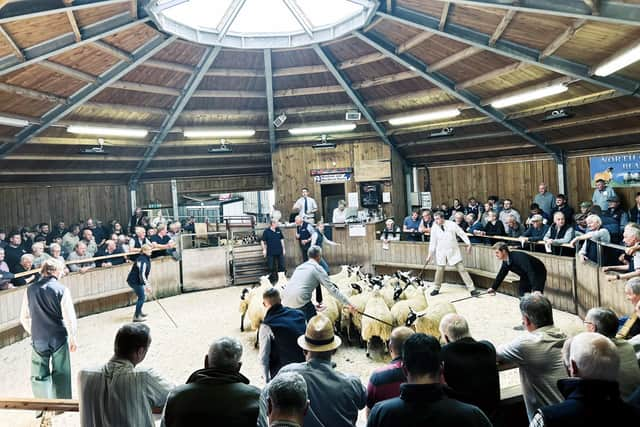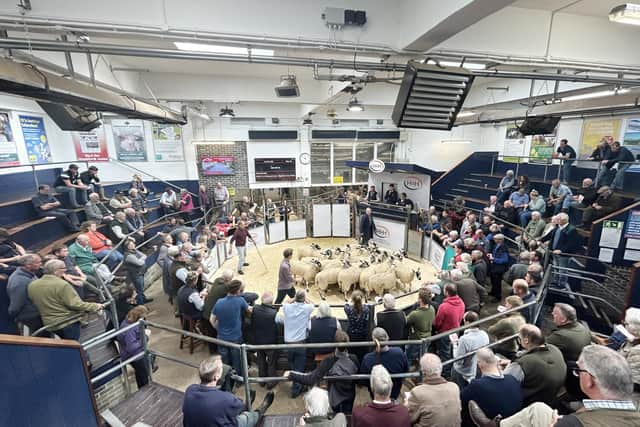NEMSA reports general increase in 2023 Mule gimmer lamb trade
and live on Freeview channel 276
However, overall sale entries were 5-10% down on the year and this, according to NEMSA, could be attributed to a number of factors, with one key reason for falling stock numbers a major bone of contention for many in the industry sector.
This, they say, can be accredited to the government and its continuing approach to an apparent policy of destocking the region’s hills with fell sheep such as the hardy Swaledale and Northumberland Blackface, mothers of the all-purpose North of England Mule
Advertisement
Advertisement
As one leading auctioneer noted “because of the government’s desire to feed the country through planting trees,” while NEMSA’s national chairman Jonathan Hodgson, who farms with his family at High Borrans, Windermere, declared: “Government policies are removing these sheep. Land is being rewilded and planted at an alarming rate, especially in the Lake District. For instance, all five of my neighbours are destocking their sheep and either planting or simply rewilding with hill cattle.”


Adam Day, managing director of The Farmer Network, an independent, non-profit, farmer-led organisation based in Penrith that provides help and support to farmers and their businesses across Cumbria and the Yorkshire Dales, is equally vociferous on this subject.
He declared: “The annual pilgrimage to the hills of the North has taken place since the late 19th Century. Generations of shepherds make their way to the auction marts to purchase their annual flock replacements or sheep to sell on across the lowland pastures of the UK.
“The Mule ewe lamb has become the mainstay of many lowland flocks, with the trip North and the money spent in auctions then becoming the backbone of the individual vendors’ businesses. Furthermore, the local economy benefits during the sales through a huge amount of spending, with hotels, pubs, B&Bs and shops all doing a roaring trade in villages surrounding the marts.
Advertisement
Advertisement
“It is a vital circular economy and the Mule ewe lamb has so much more value than just a prime lamb breeder. She is an essential part of the local economy and, as such, worth millions. The problem is that few people know and understand this and we need to get the message across.


“Now, in these troubled times, where wholesale tree planting, bio diversity net gain credits, stewardship on the hill and other challenges to rural land use are pressurising many farmers in upland areas, it has never been more important for everyone in the sheep industry to offer a strong message to anyone that will listen.”
Back at this year’s ewe lamb sales, the consensus was that trade improved week-on-week as the season progressed, with averages generally up on the year, albeit in some cases not excessively, and while top pens might in some instances have been down on last year’s extreme rates the bottom end appeared substantially dearer.
While some marts were fortunate enough to see increased entries others possibly struggled to maintain numbers, most reporting that many more lambs were needed to satisfy demand and could have been sold to vendors’ advantage.
Advertisement
Advertisement
Two other reasons for falling numbers could, according to NEMSA, be attributed to poor scans following on from last year’s drought, coupled with the fact that many North of England farmers suffered a great deal of bad weather during lambing time, which would also reduce numbers.


But one thing remained constant, with auctions reporting that lambs were slightly smaller than in normal years. NEMSA’s secretary Linda Allan explained: “While the drought clearly stunted the growth of many lambs another reason was, perhaps, breeders’ unwillingness to invest money into feed with continuing uncertainties in the farming climate.
“For many vendors, though, it was running lambs that proved the dearest, while it was also reassuring to hear reports of new buyers coming forward from across the country. ‘Grass but no Brass’ was perhaps our initial worry, but an increase in trade throughout the sales season proved this wrong.
“Southern buyers maybe chose not the stock to their usual levels last year due to the drought, which went well into September, but happily they were back again in force this year, flocking north to plug the deficit by building up numbers once more.
Advertisement
Advertisement
“As ever, most auctions saw a market for the shrewd buyer, many purchasers reporting that their lamb averages were very similar or even down on the year, particularly at the earlier sales. In an increasing market it become very hard to forecast when a buyer should bite the bullet and hindsight is great thing, but many lambs bought early on will now be looking very cheap. Tupping lambs, especially, looked profitable throughout the season if farmers are willing to lamb.”